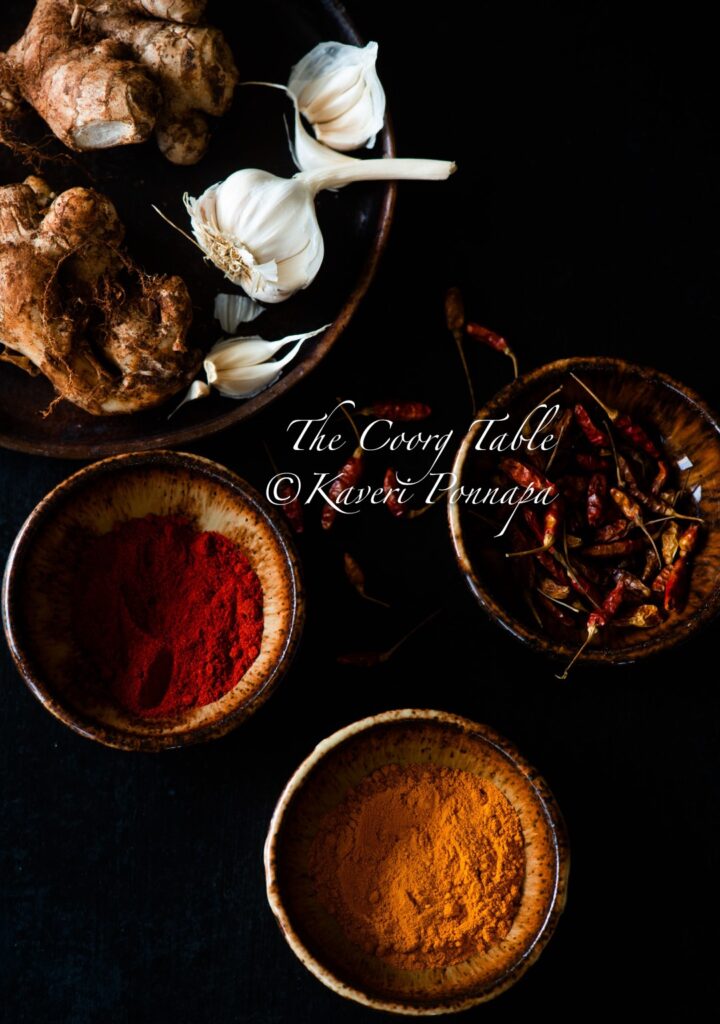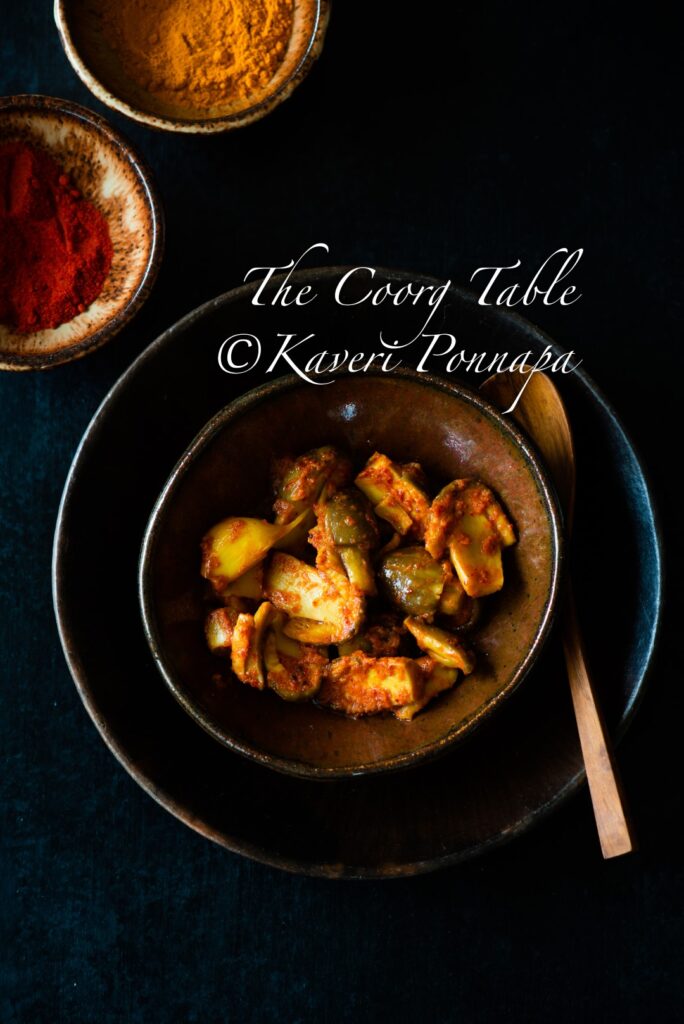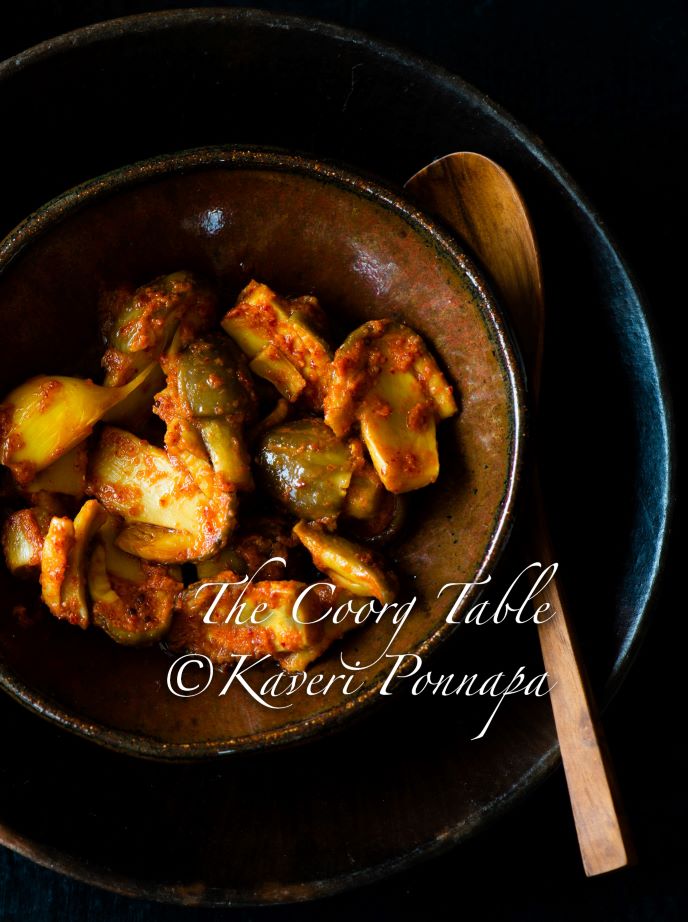Last year, ālë kummë, fragrant and substantial, poured in: tight buds, open caps, tall, short, every shape and size possible. I am obsessed with wild mushrooms, and the sight of bag after bag landing on my kitchen table put me in a haze of happiness. I cleaned, sliced, cooked, roasted, and still they poured in. The tightest, freshest buds went into two large jars of pickle, probably the best I have made in decades. The sheer volume of fresh, wild mushrooms had me thinking about our old belief, that these fungi proliferate after thunderstorms, springing up after rain and lightning, in the same places, year after year. While mushroom hunting after the rains on coffee plantations, we returned to familiar spots, and were never let down. The science behind this magic lay below the soil, where the spores by which mushrooms reproduce grew into hyphae, long filaments, a mass of which created a mycelium, which, under ideal conditions, produced the mushrooms we harvested year after year.
Some fascinating, contemporary scientific research from Japan, another mushroom loving food culture supports this old belief. As part of a four year-long study at Iwate University led Koichi Takaki, associate professor, demonstrated that jolts of electricity simulating lightning strikes significantly increased volumes of mushrooms produced by certain cultivated species.

When lightning strikes in Nature, it was assumed that a charge ran through the soil, stimulating mushrooms to reproduce more abundantly, prompted by changes in temperature and other factors, including a need to reproduce in the face of a threat to their existence—lightning strikes. The experiments— extensive and varied—all led back to the familiar belief that lightning increases the numbers, and sometimes, the size and density of mushrooms. After browsing through several articles online, including this one : https://www.nationalgeographic.com/science/article/100409-lightning-mushrooms-japan-harvest I wondered if last year’s generous haul was the result of multiple lightning strikes across the edges of forest from where it had been harvested by tribal people.
The pickle itself, which is all that is left of that harvest, is meaty treat, the dense textures of the ālë kummë ideally suited for the acid, spice and oil that help preserve it. Coated in a little spice and plenty of oil, the texture lasts remarkably well under refrigeration, and we have had almost a year of savouring these beautiful mushrooms.

After much reading, I am not sure how I feel about the use of simulated lightning to increase harvests of cultivated mushrooms. As for wild mushrooms, the idea of leaving them to lead their secret lives in forests, fields, on fallen logs, the greater part of their lives underground, invisible to us appeals more than increased harvests. In Coorg, the demand for wild mushrooms grows as the tourist traffic increases, even as climate change and aggressive farming practices deplete supplies. The land can only supply what it is allowed to produce. Everyone wants a taste of local, wild foods: Chefs on the lookout for novel, attention-grabbing dishes for their ‘pop-up’ menus often ask about how they should go about sourcing wild mushrooms. An answer they might not understand runs through my mind, taken from a modern Kodava poem, which, in two, short lines, evokes an entire season, the sense of eager anticipation, and a far gentler way of taking only what you need from the land:
“At the first rumble of thunder
women set out in search of Ëdënji kummë”.
When did you last see a harvest of all the mushrooms your grandparents remember?





Very informative and excellently written. Mushroom is one of my favorites and have been eating it for a long time. From now on, with knowledge of the interesting facts mentioned in your article, it will taste even better :=) Thank you for your effort in reading, gathering and sharing such knowledge.
Balaji
Thank you very much for visiting this page and reading, Balaji. Mushrooms are quite amazing foods, so flavourful and nourishing. There’s a recipe for a superb mushroom curry here:
https://kaveriponnapa.com/the-coorg-table/finders-keepers/
If you haven’t tried it yet, please do, it’s delicious!
Kaveri
Very nicely written Kaveri!
I too remember having heard from my parents about the rich harvest of mushrooms after the first rains and the sheer variety of mushrooms. Those were times when one took only what we needed from Mother Nature. We were mindful of our actions.
Today, we can hardly dream of such a harvest owing to several factors, as mentioned by you. We should let go of greed and let Nature create her magic if we are to see those mushrooms in future.
Thank you for reading,Neetu.The mushroom harvests, for those who have seen them a couple of decades ago, are some of the most beautiful memories of Coorg.
Although we do see seasonal wild mushrooms, the variety and quantity are nothing like what they were. So glad you have stories to cherish from your parents.
Kaveri
Very good information on our favourite Kumme,,,
Thank you very much for reading. Glad you enjoyed this one.
Kaveri